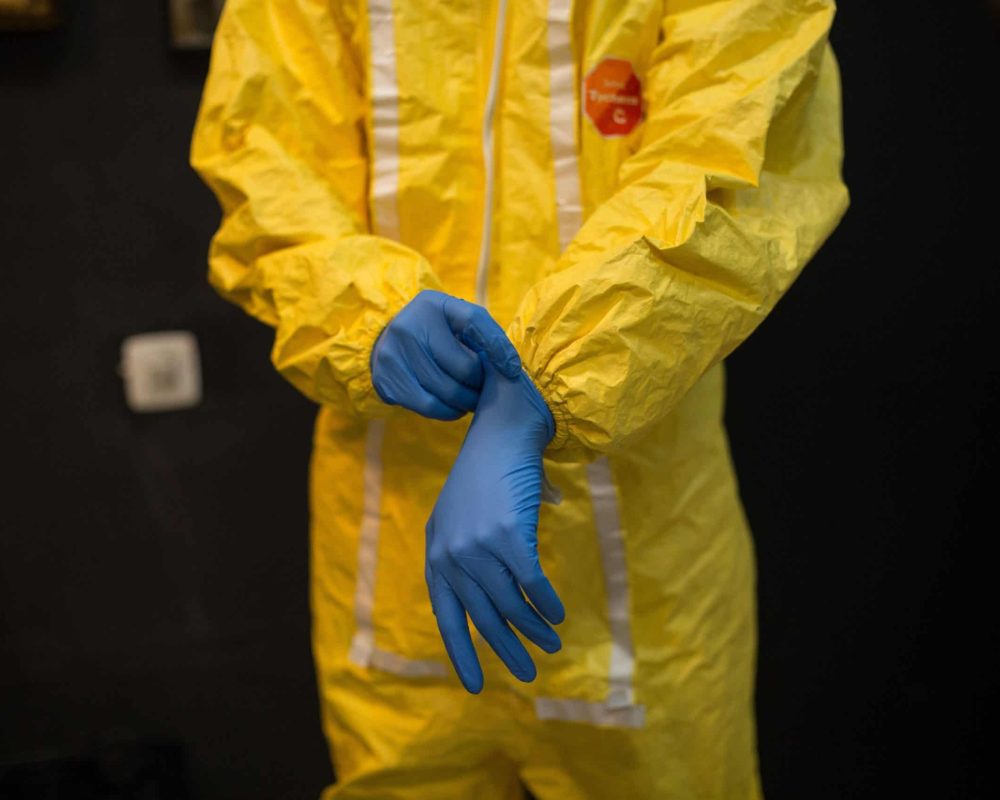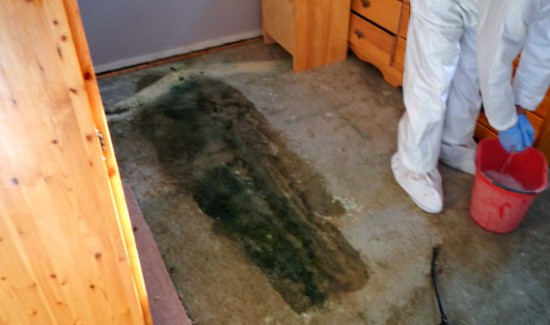Sewage Cleanup Services: Quick and Safe Remediation of Contaminated Areas
Sewage Cleanup Services: Quick and Safe Remediation of Contaminated Areas
Blog Article
Specialist Biohazard Cleansing and Decontamination for Blood, Bodily Fluids, and Hazardous Materials
In the realm of biohazard cleansing and purification for blood, bodily liquids, and unsafe products, accuracy and experience are paramount. The prospective health and wellness threats related to direct exposure to biohazards highlight the crucial requirement for careful handling and extensive cleaning. Specialized training equips specialists with the expertise and abilities essential to deal with these dangerous circumstances successfully. Nevertheless, it is not just regarding tidying up; the value of utilizing correct decontamination techniques can not be overemphasized. As we navigate the complex landscape of biohazard cleaning, understanding the subtleties of policies, conformity, and the specialized equipment at play becomes critical in making certain a safe and thorough purification process.
Health Risks of Biohazard Direct Exposure
Direct exposure to biohazards postures considerable health and wellness threats that can result in severe consequences for communities and people alike. Biohazards encompass a variety of biological materials, including blood, bodily liquids, mold, germs, viruses, and other potentially contagious products. When people enter call with these biohazards, whether with accidents, inappropriate handling, or ecological direct exposure, they face the risk of having severe diseases or conditions.
Among the primary health and wellness threats connected with biohazard exposure is the transmission of transmittable conditions. Bloodborne microorganisms such as HIV, hepatitis B and C, and various germs can be existing in biohazardous products, posturing a straight threat to human wellness. Inhaling air-borne biohazards like mold and mildew spores or coming right into call with polluted surface areas can likewise lead to breathing concerns, allergies, and various other damaging health and wellness effects.
In addition, biohazard direct exposure can have long-lasting health and wellness ramifications, with some diseases manifesting years after the initial call (Blood Cleanup). For that reason, it is vital to focus on appropriate biohazard cleansing and purification to alleviate these health and wellness dangers and ensure the security of communities and people

Specialized Training for Biohazard Cleaning
When it comes to handling biohazard clean-up effectively and safely, specialized training plays a basic duty in guaranteeing correct decontamination procedures are complied with. Biohazard cleanup requires details expertise and abilities to successfully mitigate risks connected with bloodborne pathogens, physical liquids, and unsafe materials. Experts educated in biohazard clean-up undergo rigorous guideline on just how to securely deal with, remove, and get rid of biohazardous products to stop contamination and direct exposure.
Specialized training for biohazard cleanup covers an array of important subjects, consisting of appropriate individual protective equipment (PPE) use, bloodborne virus understanding, decontamination techniques, and contaminated materials disposal methods. People educated in biohazard cleanup are furnished with the necessary experience to assess contamination degrees, identify prospective risks, and carry out suitable cleaning procedures in conformity with governing requirements.
Constant training and education are critical in the area of biohazard cleanup to remain upgraded on the most recent decontamination modern technologies, safety procedures, and regulations. By purchasing specialized training, biohazard clean-up experts can successfully react to emergency cleanup circumstances and protect both public health and the setting.
Relevance of Correct Decontamination Techniques
Making use of appropriate decontamination techniques is vital in biohazard cleaning to properly decrease and remove hazardous products health and wellness dangers. Efficient decontamination not only makes certain the removal of noticeable traces of blood, physical fluids, and other biohazards however also targets unseen virus that might present major wellness dangers if not properly eliminated. By complying with strict decontamination methods, educated professionals can considerably decrease the risk of direct exposure to unsafe microbes, infections, and germs that might result in infections or diseases.
Proper purification strategies involve using specific tools and disinfectants that are especially developed to neutralize biohazards successfully. Thorough cleansing and sanitation of polluted areas are necessary to protect against the spread of pathogens and guarantee a safe environment for residents. Additionally, the right disposal of biohazardous waste complying with purification procedures is vital in avoiding contamination of other surfaces or individuals.

Equipment and Tools for Safe Clean-up
When dealing with blood, physical fluids, or hazardous products, biohazard cleansing specialists depend on specialized equipment to lessen direct exposure dangers and extensively decontaminate the damaged area. In addition, biohazard cleaning packages containing disinfectants, absorptive products, and biohazard bags are utilized to securely contain and get rid of of infected items.
Advanced cleansing tools like hospital-grade disinfectants, HEPA-filtered vacuum cleaners, and fogging makers go to my site are used to sterilize surface areas and get rid of biohazards efficiently. Specialized tools such as sharps containers and biohazard waste disposal bins are used to securely manage sharp things and biohazardous waste products. By making use of the best devices and devices, biohazard cleansing professionals can make sure a comprehensive clean-up procedure that focuses on safety and reduces health and wellness risks for both workers and passengers of the damaged room.
Regulations and Compliance in Biohazard Cleaning
Appropriate adherence to guidelines and conformity criteria is paramount in biohazard cleaning to make sure the security of both employees and the setting. Federal government agencies such as OSHA (Occupational Safety and Health Administration) and the EPA (Epa) have established particular guidelines for biohazard cleanup treatments to decrease health risks and environmental contamination. These regulations cover a series of aspects including the handling, transport, and disposal of biohazardous products, along with the essential training and safety equipment needed for workers associated with the clean-up process.
Biohazard cleaning firms have to remain updated with these policies to guarantee that their procedures fulfill the needed security criteria. Failing to conform with these policies can result in extreme repercussions, including penalties, lawful action, and threatening the health and wellness of people and the environment. By following strict regulations and compliance steps, biohazard cleansing business can efficiently mitigate threats and make sure a complete and secure cleaning process for all parties entailed.
Conclusion
To conclude, biohazard cleansing and purification require specific training, proper techniques, and adherence to regulations. Direct exposure to blood, bodily liquids, and hazardous products poses substantial health dangers, making it essential to make use of the best tools and tools for risk-free cleanup. By adhering to strict procedures and standards, professionals can properly mitigate the risks connected with biohazard exposure and make sure the safety of both themselves and others.
As we navigate the complex landscape of biohazard cleaning, comprehending the subtleties of regulations, compliance, and the customized tools at play becomes imperative in guaranteeing a extensive and secure purification process. (Blood Cleanup)
When it comes to managing biohazard clean-up effectively and securely, specialized training plays a basic role in guaranteeing appropriate purification treatments are adhered to.Making use of correct purification techniques is essential in biohazard cleaning to successfully decrease and remove hazardous products Read Full Report wellness threats. In how to clean up blood spills osha addition, biohazard cleansing packages having anti-bacterials, absorptive materials, and biohazard bags are used to safely get rid of and have of infected products.
Government companies such as OSHA (Occupational Safety and Health Management) and the EPA (Environmental Defense Agency) have developed certain standards for biohazard cleaning treatments to lessen health and wellness risks and environmental contamination.
Report this page